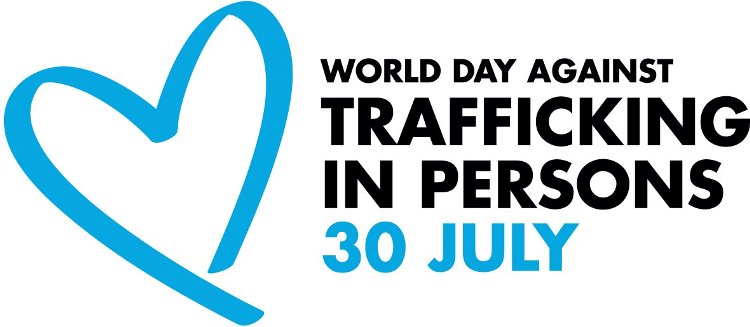World Day against Trafficking in persons: Responding to the trafficking of children and young people
People are trafficked for many exploitative reasons including forced labor and sex, forced marriage, domestic servitude, child soldiers, forced begging and stealing and for removing body organs.

The World Day against Trafficking in Persons is marked every year on 30th July to raise awareness of the situation of victims of human trafficking, promote and protect their rights. The 2018 World Day against Trafficking in Persons is focusing on responding to the trafficking of children and young people to draw attention faced by the trafficked children and possible action initiatives linked to safeguarding and ensuring justice for child victims. The day was proclaimed by the United Nations General Assembly, in its resolution A/RES/68/192 in 2013.
The United Nations Sustainable Development Goals also addresses the trafficking of persons, under the targets of goals 5, 8 and 16. These goals call for an end to trafficking and violence against children, the need for measures against human trafficking, and they strive for the elimination of all forms of violence against and exploitation of women and girls.
Human Trafficking is a modern form of slavery and a serious crime that violates human rights. Almost every country in the world is affected by trafficking, whether as a country of origin, transit or destination for victims. People are trafficked for many exploitative reasons including forced labor and sex, forced marriage, domestic servitude, child soldiers, forced begging and stealing and for removing body organs.
World Trafficking Day is a reminder of the brutal reality far too many children and young people face. Governments must step up and implement solutions to #EndHumanTrafficking. https://t.co/Ju74KOoLXZ pic.twitter.com/jUJmrUKv2M
— UNICEF (@UNICEF) July 30, 2018
Conflicts, humanitarian crisis, extreme poverty, and natural disasters increase the vulnerability of millions around the world and left at greater risk of being trafficked. According to the International Labor Organization (ILO), 21 million people are affected by forced labor, trafficking and slavery around the world today. Of those, 68 percent are exploited in the labor sector, in industries like agriculture, mining, construction, and domestic work.
Few facts about human trafficking:
- Trafficking in persons is the 2nd largest criminal industry in the world.
- The most common form of human trafficking is sexual exploitation, accounting for 79 percent, globally.
- Over 71 percent of human trafficking victims are women and girls.
- Over 30 percent of human trafficking victims globally are children.
- Child labor and forced labor generate USD 39 billion annually.
“Human trafficking takes many forms and knows no borders. Human traffickers too often operate with impunity, with their crimes receiving not nearly enough attention. This must change.” — UN Secretary-General António Guterres
No country can tackle the issue of human trafficking alone. It requires the contribution and commitment of international communities, governments, civil society, and stakeholders to strengthen efforts to address the factors that allow human trafficking to thrive.
"आइए, अंतरराष्ट्रीय मानव तस्करी विरोधी दिवस पर हम इस अपराध के निवारण, संरक्षण और अभियोजन के लिए एकजुट हों और ऐसे भविष्य का निर्माण करें जहां यह अपराध मौजूद ही न हो।"यहां #संयुक्तराष्ट्र महासचिव का #EndHumanTrafficking पर संदेश पढ़ें: https://t.co/IaBf9emVI7@UNinHindi pic.twitter.com/BGancFniZt
— United Nations India (@UNinIndia) July 30, 2018
- FIRST PUBLISHED IN:
- Devdiscourse News Desk
ALSO READ
Soccer-Nigeria, Zambia women win playoffs to take last two Olympic spots
Under global spotlight for its oppressive policies, Afghanistan ranks 178th on women's economic participation in World Bank report
FACTBOX-Swiss women win big in a landmark climate case. Where do US climate cases stand?
US Women's Players Association Stands in Solidarity with LGBTQ Community
INDI alliance people insult 'Shakti' and ill-treat women; everyone knows how DMK treated late Jayalalithaa, says PM in TN rally.










